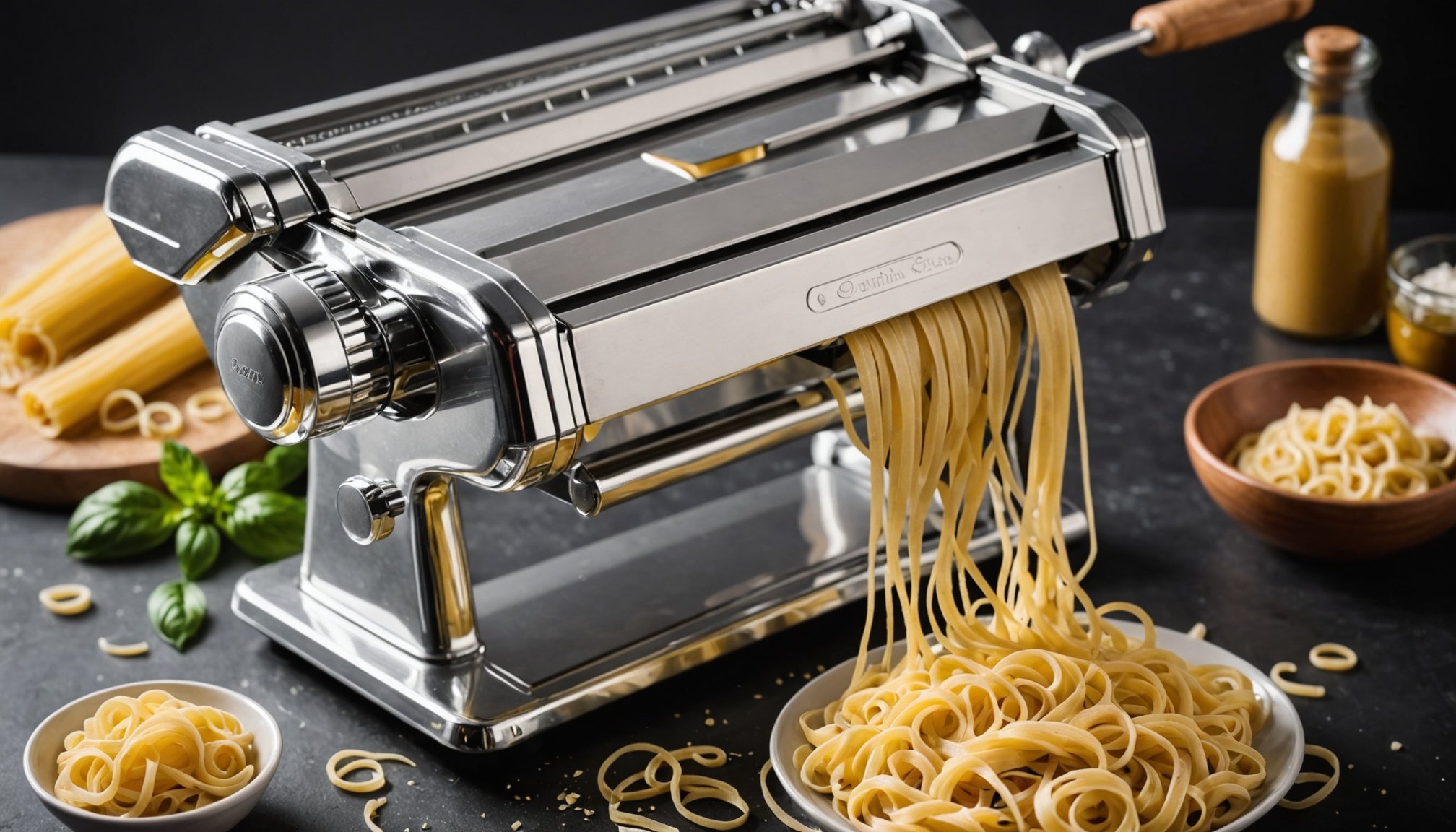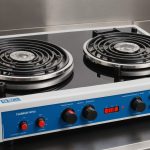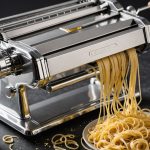Choosing the right pasta maker can elevate your homemade noodle game from ordinary to extraordinary. With various types and features available, understanding what to prioritize is essential for achieving perfect results. Considerations range from material quality to ease of use and cleaning. Tailoring your choice to your cooking style can turn pasta-making into a delightful culinary adventure. Explore the key features that will transform your kitchen experience and help you create delicious, authentic pasta every time.
Material Quality and Durability
Understanding the core of pasta makers
Also read : Essential Considerations for Selecting a Hot Plate with Superior Heat Distribution
When selecting a pasta maker, the material quality is crucial for ensuring both performance and longevity. The choice between stainless steel and plastic materials can significantly impact the durability and maintenance of the machine.
Stainless Steel vs. Plastic
Have you seen this : Key Features to Look for in a Yogurt Maker for Perfect Home-Made Yogurt
Stainless steel pasta makers are renowned for their robust construction and resistance to wear and tear. They offer a sleek appearance and are generally more durable, making them a preferred choice for those seeking a long-term investment. On the other hand, plastic pasta makers are lighter and often more affordable. However, they may not withstand the test of time as effectively as their stainless steel counterparts.
Long-term Durability and Maintenance
When considering maintenance, stainless steel models require regular cleaning to prevent rust and maintain their shine. In contrast, plastic models might be easier to clean but could suffer from scratches and discoloration over time.
Key Considerations:
- Material Quality: Stainless steel offers longevity; plastic provides affordability.
- Durability: Stainless steel is more robust.
- Maintenance: Regular care is essential for all materials.
In conclusion, understanding the material quality and durability of your pasta maker is paramount to making an informed decision, ensuring that it meets your culinary needs for years to come.
Ease of Use and User Experience
Enhancing your pasta-making journey
Key Features for Usability
The ease of operation in a pasta maker is significantly enhanced by certain user-friendly features. Models equipped with clear instruction manuals and intuitive design make the process straightforward for beginners and experts alike. A user-friendly interface can transform the pasta-making experience from daunting to delightful.
Importance of Adjustable Settings
Adjustable settings are pivotal in customizing pasta thickness and texture, catering to diverse culinary preferences. Such controls allow for a personalized touch, enhancing the overall usability of the machine. By offering a range of settings, these machines accommodate different pasta types, from spaghetti to fettuccine.
User Experiences and Challenges
Despite the benefits, some users encounter challenges such as dough sticking or difficulty in adjusting settings. However, many find these issues manageable with practice and familiarity. Here’s a quick rundown of common experiences:
- Positive Aspects: Easy to clean, efficient operation, consistent results.
- Challenges: Initial setup complexity, dough handling.
User experiences highlight the importance of choosing a model that aligns with individual needs and preferences, ensuring a seamless and enjoyable pasta-making journey. By focusing on user-friendly features and ease of operation, one can significantly enhance their culinary adventures.
Size and Capacity
Finding the perfect fit for your culinary space
Determining the Right Size for Your Kitchen
Choosing the appropriate pasta maker size is essential for optimizing your kitchen space. Compact models are ideal for smaller kitchens, offering convenience without overwhelming your countertop. Consider the dimensions and ensure the machine fits comfortably in your designated area.
Capacity Considerations for Family vs. Individual Use
The capacity of a pasta maker can significantly influence your cooking experience. For families, a larger capacity model is beneficial, allowing for the preparation of multiple servings in one go. Conversely, individuals or couples might prefer smaller models that cater to more modest portions, providing efficiency without excess.
Storage Solutions for Larger Models
Larger pasta makers require thoughtful storage solutions to maintain kitchen organization. Consider using dedicated cabinets or shelving to store these appliances when not in use. This not only preserves your kitchen aesthetics but also ensures the pasta maker remains in good condition.
Key Considerations:
- Size: Match the pasta maker size to your kitchen space.
- Capacity: Choose based on household needs.
- Storage: Plan for storing larger models efficiently.
By focusing on these aspects, you can select a pasta maker that seamlessly integrates into your kitchen, enhancing your culinary adventures.
Types of Pasta It Can Make
Exploring the versatility of pasta makers
Overview of Pasta Types
A well-chosen pasta maker can transform your kitchen into an authentic Italian trattoria. From spaghetti to lasagna, the variety of pasta you can create is vast. Fettuccine, with its wide, flat ribbons, is perfect for creamy sauces, while spaghetti is a classic choice for tomato-based dishes. For those who love hearty meals, lasagna sheets provide the foundation for layered pasta dishes.
Comparison of Models Based on Pasta Versatility
Different models offer varying levels of versatility. Some machines are designed to handle a wide range of pasta varieties, providing flexibility in your culinary creations. Others may specialize in a few types, offering superior quality for those specific shapes. Consider your pasta-making goals when selecting a machine.
Specialty Attachments for Different Pasta Shapes
To enhance versatility, many pasta makers come with specialty attachments. These attachments allow you to experiment with unique pasta shapes like ravioli or tortellini. The ability to easily switch between attachments can significantly expand your pasta repertoire.
Key Considerations:
- Pasta Varieties: Spaghetti, fettuccine, lasagna.
- Versatility: Choose models offering diverse pasta options.
- Attachments: Expand your pasta-making capabilities.
By focusing on these elements, you can select a pasta maker that meets your culinary needs.
Maintenance and Cleaning
Ensuring longevity through proper care
Importance of Easy Disassembly
For effective pasta maker maintenance, easy disassembly is crucial. It allows you to access all parts for thorough cleaning, reducing the risk of dough buildup. Many models feature components that can be quickly detached, streamlining the cleaning process and ensuring hygiene.
Recommended Cleaning Methods for Various Materials
Different materials require specific cleaning methods. Stainless steel components should be wiped with a damp cloth to prevent rust. Avoid using abrasive cleaners that may scratch the surface. Plastic parts can often be washed with mild soap and water. Always ensure parts are thoroughly dried before reassembly to maintain their condition.
Routine Maintenance Tips
Regular upkeep can significantly prolong the lifespan of your pasta maker. Here are some tips:
- Lubricate moving parts periodically to ensure smooth operation.
- Inspect for any signs of wear and replace parts as needed.
- Store in a dry place to prevent moisture damage.
By following these cleaning tips and routine maintenance practices, you can keep your pasta maker in top condition, ensuring it serves your culinary needs for years to come. A well-maintained machine not only enhances performance but also offers a more enjoyable pasta-making experience.
Budget Considerations
Exploring cost-effective choices for pasta enthusiasts
Overview of Price Ranges for Different Models
When considering a pasta maker, understanding the pasta maker prices is essential. Models range from budget-friendly options to premium choices. Entry-level machines can start as low as $30, while high-end models may exceed $200. These price variations reflect differences in features, materials, and brand reputation.
Analyzing Cost vs. Features Offered
A careful cost-value analysis is crucial in determining the best pasta maker for your needs. More expensive models often offer advanced features such as multiple pasta attachments and higher durability. However, budget-friendly options can still provide good quality for basic pasta-making needs. Consider what features are most important to you and balance them against your budget.
Recommendations for Budget-Friendly Yet Quality Options
For those seeking quality without breaking the bank, several models stand out. Here are a few recommendations:
- Marcato Atlas 150: Known for its durability and versatility.
- Philips Compact Pasta Maker: Offers automatic mixing and kneading.
- Imperia Pasta Maker: Provides a traditional pasta-making experience.
These models are praised for their cost-value analysis, offering essential features at a reasonable price point. By focusing on these budget-friendly options, you can enjoy homemade pasta without compromising on quality or functionality.
Recommendations of Popular Models
Exploring the top pasta makers on the market
Overview of Highly Rated Pasta Makers
Selecting from the top pasta makers involves considering both features and user satisfaction. These machines stand out for their performance and reliability, making them favorites among pasta enthusiasts.
Comparison of Features and User Reviews
When evaluating pasta makers, consider features like durability, ease of use, and versatility. User reviews often highlight the Marcato Atlas 150 for its robust construction and smooth operation. The Philips Compact Pasta Maker is praised for its automatic functions, simplifying the pasta-making process. Meanwhile, the Imperia Pasta Maker is cherished for its traditional design and ability to produce authentic pasta textures.
Pros and Cons of Each Recommended Model
Understanding the pros and cons can guide your decision:
-
Marcato Atlas 150:
-
Pros: Durable, versatile, easy to clean
-
Cons: Higher price point
-
Philips Compact Pasta Maker:
-
Pros: Automatic mixing, compact size
-
Cons: Limited pasta shapes
- Imperia Pasta Maker:
- Pros: Traditional design, high-quality pasta
- Cons: Manual operation requires effort
By focusing on these model reviews, you can identify the best option that aligns with your culinary needs and preferences.
Tips for Choosing the Right Pasta Maker
Exploring your culinary preferences for the perfect pasta-making experience
Assessing Personal Cooking Styles and Preferences
When selecting a pasta maker, it's essential to align the choice with your personal cooking styles. Consider whether you prefer traditional manual methods or modern automatic functions. Those who enjoy hands-on cooking might lean towards manual models, while others might prefer the convenience of electric options. Reflecting on your cooking habits will guide you to a pasta maker that complements your kitchen routine.
Key Questions to Ask Before Purchasing
Before making a purchase, ask yourself these critical questions:
- What is my primary cooking style?
- How often will I use the pasta maker?
- Do I need a model with multiple pasta shapes?
These questions help in selecting a pasta maker that meets your needs, ensuring a satisfying culinary journey.
Final Considerations for Making an Informed Choice
When finalizing your decision, weigh the pros and cons of each model. Consider factors like durability, ease of cleaning, and the variety of pasta it can produce. A thoughtful approach to selecting a pasta maker will lead to a choice that enhances your cooking experience.
Key Considerations:
- Cooking Styles: Manual vs. automatic
- Preferences: Pasta types, frequency of use
- Informed Choice: Balance features with needs.











